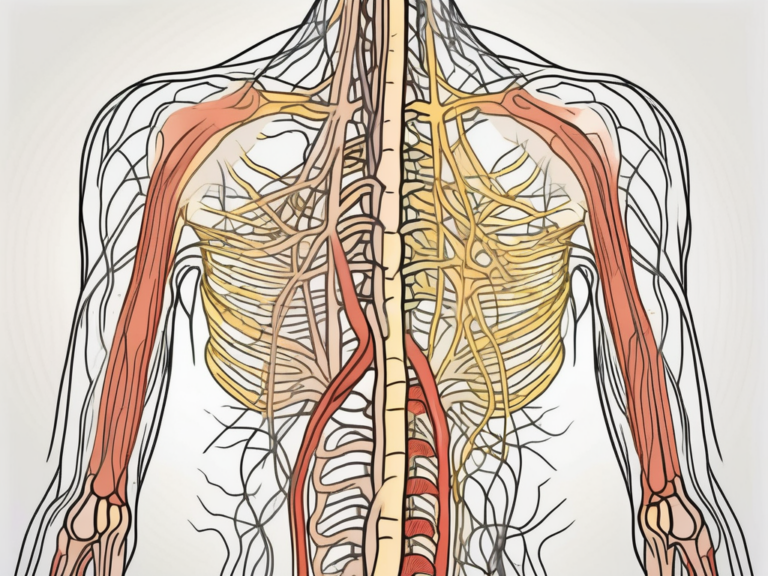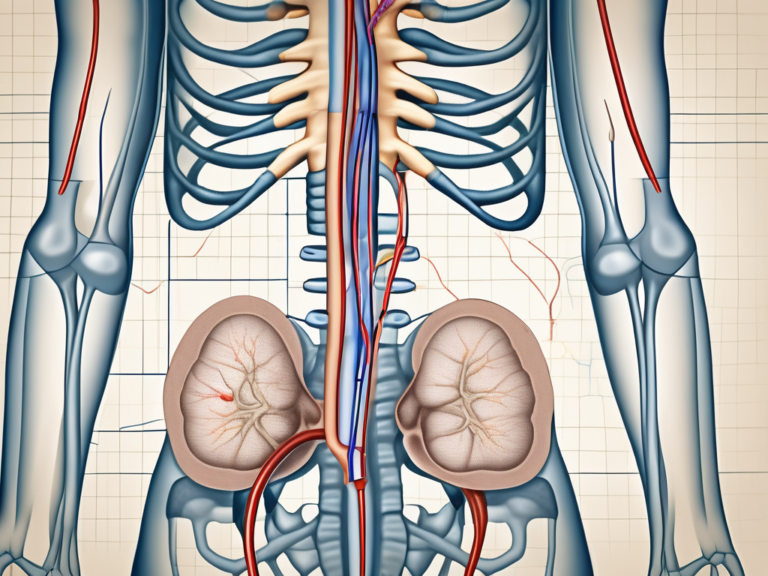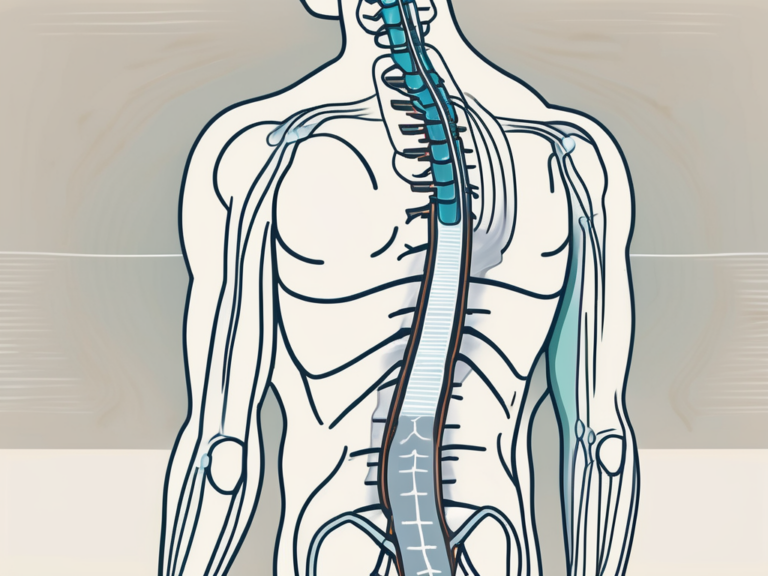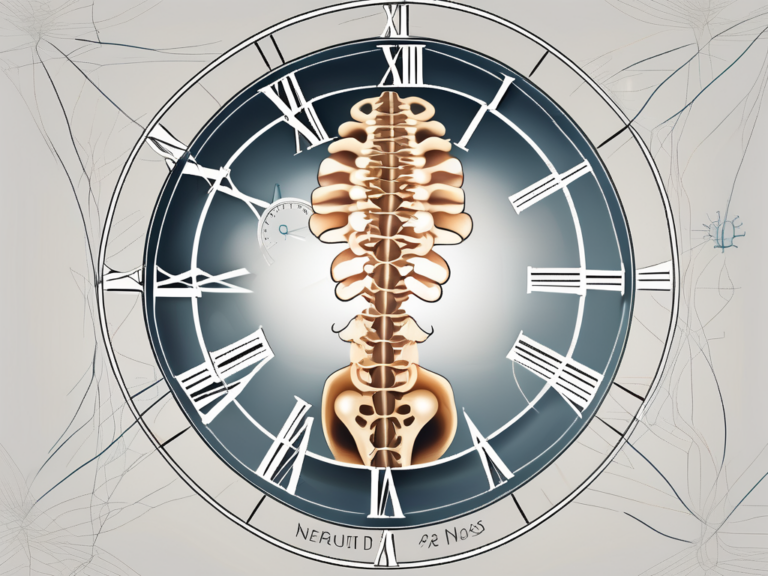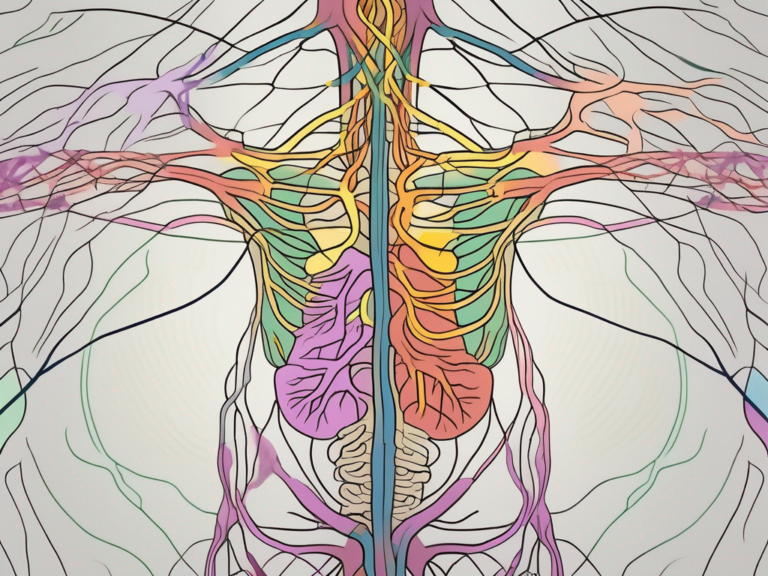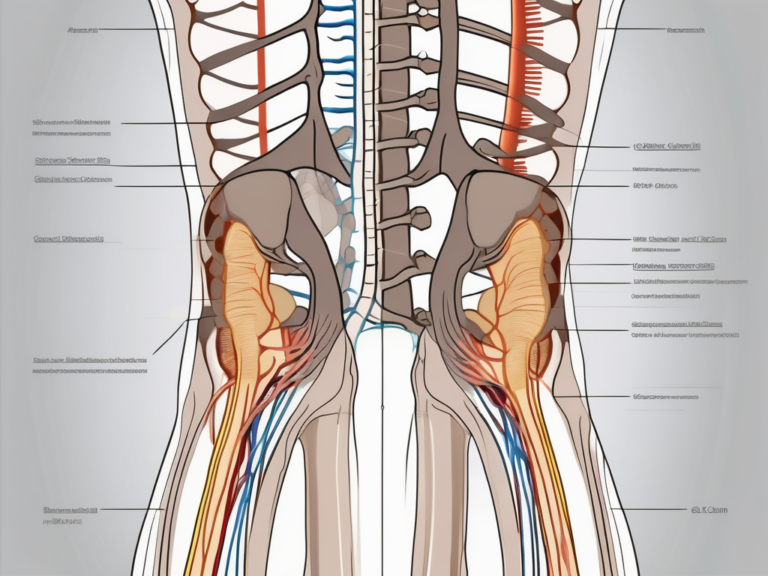What Nerve Extends from the Sacral Plexus?
The sacral plexus is a complex network of nerves that emerges from the lowest part of the spine, the sacrum. It plays a crucial role in connecting the lower body to the central nervous system. In this article, we will explore the anatomy, function, and significance of the nerve that extends from the sacral plexus – the sciatic nerve.
Understanding the Sacral Plexus
The sacral plexus is a fascinating and intricate network of nerves that plays a vital role in the functioning of the lower body. It is formed by the fusion of nerve roots originating from the fourth lumbar (L4) to the fifth sacral (S5) vertebrae. This fusion creates a complex web of nerves that supply and innervate various structures in the lower body, including the buttocks, thigh muscles, and parts of the leg and foot.
One of the key functions of the sacral plexus is to control movement. It sends signals from the brain to the muscles in the lower extremities, allowing us to perform essential actions such as walking, running, and jumping. Without the sacral plexus, these movements would be impossible, and our mobility would be severely compromised.
In addition to its role in motor function, the sacral plexus also plays a crucial role in relaying sensory information from the lower body to the brain. It carries signals related to touch, temperature, pain, and proprioception, allowing us to perceive and interpret various sensations. For example, when you touch a hot surface with your foot, it is the sacral plexus that transmits the message of pain to your brain, prompting you to withdraw your foot to avoid injury.
Anatomy of the Sacral Plexus
The sacral plexus consists of five primary nerves, known as the anterior divisions of the sacral nerves. These nerves, named S1, S2, S3, S4, and S5, arise from the spinal cord and combine to form the larger sciatic nerve. The sciatic nerve is the longest and thickest nerve in the human body, extending through the buttocks and down the back of the leg.
Each of the sacral nerves has a specific role in innervating different muscles and areas of the lower body. For example, the S1 nerve supplies the gluteus maximus muscle, which is responsible for hip extension and thigh rotation. The S2 nerve innervates the hamstring muscles, allowing for knee flexion and hip extension. The S3 nerve provides sensation to the skin over the buttocks and the back of the thigh.
As the sacral nerves merge to form the sciatic nerve, they continue to branch out and supply various muscles and regions in the leg and foot. The sciatic nerve is responsible for controlling the muscles of the lower leg, such as the calf muscles, as well as providing sensation to the back of the leg, the sole of the foot, and the toes.
Function of the Sacral Plexus
The sacral plexus serves a multitude of functions beyond motor control and sensory perception. It also plays a crucial role in coordinating reflexes, such as the knee-jerk reflex. When the patellar tendon is tapped, the sacral plexus receives the sensory input and rapidly sends signals to the muscles involved, causing the leg to kick involuntarily. This reflex is an essential diagnostic tool for assessing the integrity of the sacral plexus and the overall functioning of the nervous system.
Furthermore, the sacral plexus is involved in the autonomic nervous system, which controls involuntary bodily functions. It regulates processes such as digestion, urination, and sexual function. The nerves of the sacral plexus play a significant role in maintaining the proper functioning of the pelvic organs, including the bladder, rectum, and reproductive organs.
In conclusion, the sacral plexus is a complex and vital component of the peripheral nervous system. Its intricate network of nerves enables us to perform essential movements, perceive sensations, and coordinate reflexes. Understanding the anatomy and function of the sacral plexus is crucial for appreciating the remarkable complexity of the human body and the intricate interplay between the nervous system and our everyday actions.
The Nerve that Extends from the Sacral Plexus
One of the most well-known nerves originating from the sacral plexus is the sciatic nerve. This nerve is the thickest and longest in the human body, extending from the lower back all the way down to the foot. Understanding the sciatic nerve is essential, as it can be prone to various injuries and conditions.
Identifying the Sciatic Nerve
The sciatic nerve is formed by the combination of the ventral divisions of the fourth and fifth lumbar nerves (L4 and L5), as well as the first three sacral nerves (S1, S2, and S3). It travels through the buttocks and down the back of the leg. At the knee, it branches into smaller nerves that innervate different areas of the lower leg and foot.
The sciatic nerve is not only the thickest and longest nerve in the human body, but it is also the largest nerve. It is about as thick as a finger and can measure up to 2 centimeters in diameter. This impressive size is necessary to accommodate the numerous nerve fibers that it contains, which allow for the transmission of both motor and sensory signals.
As the sciatic nerve travels through the buttocks and down the leg, it is accompanied by various blood vessels that supply oxygen and nutrients to the nerve. These blood vessels ensure the proper functioning and health of the sciatic nerve, as they provide the necessary resources for nerve cell metabolism and repair.
Role and Function of the Sciatic Nerve
The sciatic nerve provides motor control and sensation to a significant portion of the lower body. It controls the movement of major leg muscles, such as the hamstrings and calf muscles, allowing us to walk, run, and perform various leg movements. Additionally, the sciatic nerve carries sensory information from the skin, muscles, and joints of the leg and foot back to the brain, enabling us to perceive touch, pain, and temperature changes.
When the sciatic nerve is functioning properly, it allows for smooth and coordinated movement of the lower limbs. However, when the nerve is compressed or irritated, it can lead to a condition known as sciatica. Sciatica is characterized by pain, tingling, and numbness that radiates from the lower back down the leg. This condition can be caused by various factors, including herniated discs, spinal stenosis, or muscle imbalances.
It is important to take care of the sciatic nerve and maintain its health. Regular exercise, stretching, and maintaining good posture can help prevent injuries and conditions that affect the sciatic nerve. If you experience persistent pain or discomfort in the lower back or leg, it is advisable to seek medical attention to determine the underlying cause and receive appropriate treatment.
Connection between the Sacral Plexus and Sciatic Nerve
The sacral plexus and the sciatic nerve are intricately connected, playing vital roles in the functioning of the lower limb. Let’s delve deeper into the fascinating relationship between these two components and explore the remarkable journey of the sciatic nerve.
As mentioned earlier, the sciatic nerve originates from the sacral plexus, which acts as a nerve network within the pelvis. This plexus is formed by the combination of the ventral divisions of the lumbar and sacral nerves. Specifically, the ventral roots of L4, L5, S1, S2, and S3 contribute to the formation of the sciatic nerve. These nerve fibers intertwine and merge to create a robust bundle that emerges from the pelvis through the greater sciatic foramen, situated just below the piriformis muscle.
Once the sciatic nerve emerges from the pelvis, it embarks on a remarkable journey down the posterior aspect of the thigh. It traverses through the deep muscles of the buttocks, ensuring a seamless connection between the sacral plexus and the lower limb. Along its path, the sciatic nerve gives off various branches that provide both motor and sensory innervation to different leg muscles and regions of the foot.
The intricate branching pattern of the sciatic nerve ensures the proper functioning of the lower limb. Motor branches originating from the sciatic nerve supply power to the muscles responsible for movement and stability, allowing us to walk, run, and perform a myriad of physical activities. On the other hand, sensory branches transmit important sensory stimuli from the leg and foot to the brain, enabling us to perceive touch, temperature, and pain.
It is truly remarkable how the sacral plexus and the sciatic nerve work in harmony to facilitate the complex movements and sensations of the lower limb. This connection between the two not only highlights the intricate nature of our nervous system but also emphasizes the importance of this neural pathway in our day-to-day lives.
Potential Health Issues Involving the Sacral Plexus and Sciatic Nerve
Despite its essential role in our daily lives, the sacral plexus and sciatic nerve can be susceptible to certain health issues. It is important to be aware of common disorders and potential complications, along with their treatment options.
Common Disorders of the Sacral Plexus
Disorders that affect the sacral plexus can lead to various symptoms, including pain, weakness, and sensory disturbances in the lower body. One common disorder is sacral plexopathy, which occurs when there is damage or compression of the nerves in the sacral plexus. This can be caused by trauma, tumors, or inflammatory conditions such as autoimmune diseases. Sacral plexopathy can result in symptoms such as difficulty walking, numbness or tingling in the legs, and problems with bowel or bladder control.
Another common disorder involving the sacral plexus is sciatica. Sciatica is characterized by pain that radiates along the path of the sciatic nerve, which runs from the lower back through the hips and down each leg. It is often caused by a herniated disc in the spine, which puts pressure on the nerve roots that form the sciatic nerve. Other causes of sciatica include spinal stenosis, which is a narrowing of the spinal canal, and piriformis syndrome, which occurs when the piriformis muscle in the buttocks irritates the sciatic nerve.
If you experience persistent or severe symptoms such as pain, weakness, or sensory disturbances in the lower body, it is crucial to consult with a healthcare professional for an accurate diagnosis and appropriate treatment. Depending on the underlying cause of the sacral plexus disorder, treatment options may include physical therapy, pain management techniques, medication, or in some cases, surgery.
Sciatic Nerve Complications and Treatment
The sciatic nerve is prone to complications, with sciatica being one of the most common issues. Sciatica is characterized by pain and numbness that radiates down the leg, often starting in the lower back or buttocks. The pain can range from mild to severe and may be accompanied by tingling or a burning sensation.
In most cases, conservative treatments are effective in relieving sciatic nerve pain. These may include rest, physical therapy exercises to improve flexibility and strengthen the muscles supporting the spine, and pain management techniques such as hot or cold therapy, over-the-counter pain relievers, or prescription medications. Additionally, alternative therapies like acupuncture or chiropractic adjustments may provide relief for some individuals.
However, in more severe cases of sciatica where conservative treatments do not provide sufficient relief, surgical intervention may be necessary. Surgery may be recommended if there is a herniated disc pressing on the sciatic nerve or if there is a structural abnormality in the spine causing nerve compression. Common surgical procedures for sciatica include discectomy, laminectomy, or spinal fusion.
It is essential to seek medical advice if you are experiencing persistent or worsening symptoms related to the sacral plexus or sciatic nerve. A healthcare professional can evaluate your condition, provide an accurate diagnosis, and recommend the most appropriate treatment plan to help alleviate your symptoms and improve your quality of life.
The Importance of the Sacral Plexus-Sciatic Nerve Connection in Human Physiology
The connection between the sacral plexus and the sciatic nerve plays a vital role in the overall functioning of the human body. Let’s explore the impact of this connection on mobility and sensation, as well as its significance in the broader nervous system.
The sacral plexus, a network of nerves located in the lower back, is responsible for innervating the pelvic region and the lower limbs. It is formed by the fusion of the anterior rami of the spinal nerves L4, L5, S1, S2, S3, and S4. The sciatic nerve, the longest and thickest nerve in the body, arises from the sacral plexus and extends down the back of the thigh, branching out to innervate the muscles of the lower leg and foot.
Impact on Mobility and Sensation
The sacral plexus and sciatic nerve work in harmony to ensure proper movement and sensation in the lower body. They enable us to walk, run, stand, and perform countless other activities with ease. The sciatic nerve, in particular, plays a crucial role in transmitting motor signals from the brain to the muscles of the lower limbs, allowing for coordinated movements.
In addition to its role in mobility, the sacral plexus-sciatic nerve connection is also responsible for relaying sensory information from the lower body to the brain. This includes sensations such as touch, temperature, and pain. Without this connection, our ability to perceive and respond to the environment would be greatly compromised.
Any disruption or dysfunction in this connection can result in mobility issues and sensory disturbances, significantly affecting the overall quality of life. Conditions such as sciatica, which is characterized by pain radiating along the path of the sciatic nerve, can greatly limit a person’s ability to perform daily activities and negatively impact their well-being.
The Sacral Plexus and Sciatic Nerve in the Nervous System
As part of the peripheral nervous system, the sacral plexus and sciatic nerve bridge the gap between the central nervous system (brain and spinal cord) and the lower body. They provide a vital link for communication and control, allowing the brain to send commands to the lower limbs and receive important sensory information.
The sacral plexus and sciatic nerve are part of a larger network of nerves that make up the peripheral nervous system. This intricate web of nerves extends throughout the body, connecting various organs, muscles, and sensory receptors to the brain and spinal cord. It is through this network that the brain is able to monitor and regulate bodily functions, ensuring our survival and well-being.
Understanding the connection between the sacral plexus and sciatic nerve adds to our appreciation of the complex and intricate nature of the human nervous system. It highlights the interdependence of different parts of the body and emphasizes the importance of maintaining the health and functionality of these vital neural pathways.
In Conclusion
The nerve that extends from the sacral plexus and dominates the lower body’s innervation is the sciatic nerve. Its role in controlling movement and relaying sensory information is crucial for our day-to-day functioning. While the sacral plexus and sciatic nerve can be susceptible to various health issues, understanding their anatomy, function, and connection can help us appreciate the importance of caring for and seeking professional help if problems arise.
If you experience any concerning symptoms related to the sacral plexus or sciatic nerve, such as persistent pain, numbness, or weakness in the lower limbs, it is advisable to consult with a healthcare provider for an accurate diagnosis and appropriate treatment options. Taking care of our nervous system is essential for maintaining overall health and well-being.

